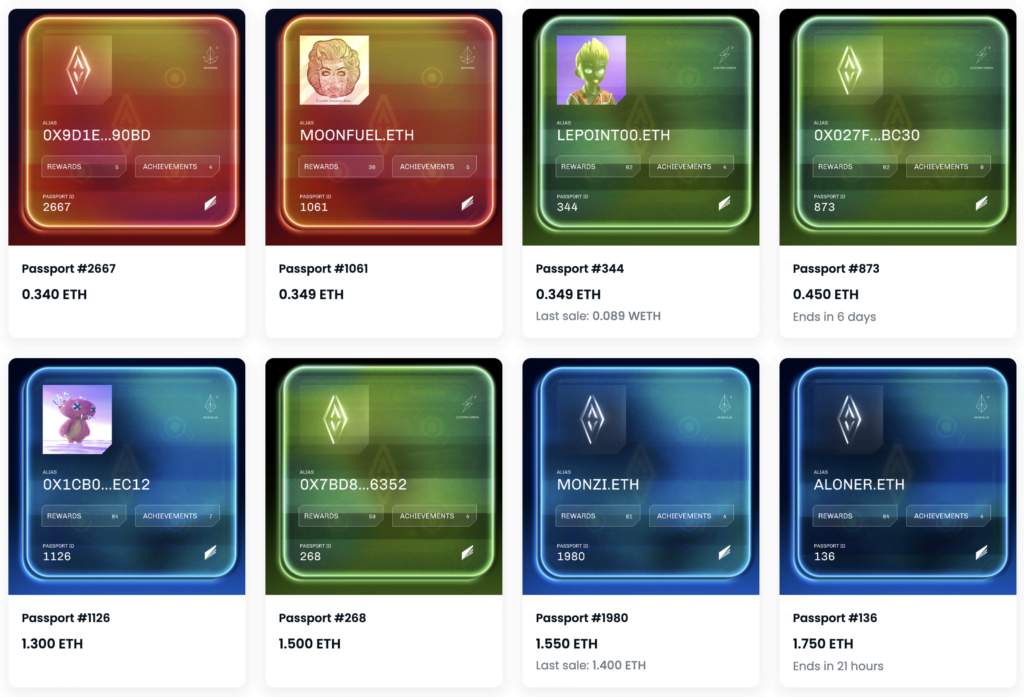NFT membership models use blockchain technology to verify asset ownership and grant the owners exclusive rewards or other benefits. Because NFTs are tradable assets in secondary marketplaces, in most cases, you can sell your NFT to someone else when you no longer need the membership.
Web3 businesses use NFT-based memberships in a variety of ways.
NFTs as online membership cards
A widespread application of NFT-based membership is to unlock access to exclusive online communities like discord channels or special clubs. The most well-known example is BAYC membership, which grants members access to collaborative graffiti boards and special merchandise.
Azuki NFT collection is another example. If you hold one of the 10,000 NFTs, you can enter a special metaverse known as Garden, where streetwear collaborations, NFT drops, and live events occur.
Well-known DJ and crypto advocate Steve Aoki’s A0K1VERSE is another token-gated metaverse. Users who own a passport NFT gain access to unique experiences in the metaverse. Passports are available in 6 tiers, each offering different benefits.

Unlock exclusive content
Many other similar token-gated opportunities exist. They may, however, be in slightly different forms. For instance, Stoner Cats features NFT-gated website content where holders can watch exclusive animations.
Access to IRL events
Flyfish Club, founded by the famous entrepreneur Gary Vaynerchuk, is a private dining club where each NFT represents a membership with access to the cocktail lounge, restaurant, outdoor space, and other private events that will be held in the future. Members can bring guests and make reservations for up to 8 people.

Another NFT initiative co-founded by Gary Vee, VaynerSports Pass, also comes with real-life benefits. Owners can participate in raffles in order to win tickets to professional sporting events and may have the chance to meet athletes.
Vote on community-driven proposals
Web3 teams distribute voting power usually through fungible governance tokens. However, some projects prefer NFT memberships to grant voting rights. For example, LinksDAO is a golf community that offers two tiers of NFT memberships with governance rights: global members have 4x governance power compared to leisure members. NFT membership also grants other features like access to special merchandise, courses, real-life events, and discounts.
Mint passes
On the public sale date of highly anticipated collections, buying an NFT becomes too competitive. Either the gas fees are too high, or you compete against the bots. That’s why trying to get a whitelist spot that lets users mint before the public release and at a lower cost is very common among the NFT community.
Some project teams reserve these spots for active community members, while some require holding other NFTs from the same project. In the latter case, mint passes, which are also issued as NFTs, are distributed to eligible members who hold the required NFT. Mint passes are very valuable and can be traded in secondary marketplaces, as well.
For example, Pixel Vault launched the Meta Hero collection with mint passes. All holders of PUNKS Comic Issue #1 NFTs were eligible, and they claimed 9,638 mint passes altogether.
Complement conventional subscription models
NFT membership models can be adapted to work with traditional revenue models such as subscriptions. For example, the upcoming NFT marketplace MOOAR founded by StepN’s team, announced that it will charge a $29.90 monthly subscription fee instead of cutting a transaction fee from each trade, a common practice in current NFT marketplaces. This monthly flat fee is very low for many pro traders, and the new marketplace can attract them for the long haul thanks to the total cost reduction.
The crypto giant Binance combines a concept similar to mint passes with a subscription idea via its subscription mechanism to give everyone an equal opportunity to grab an NFT from the primary sales. To this end, users must lock specific NFTs defined by the project team to be qualified and subscribe for participation tickets, which, in return, increases the chance of acquiring an NFT when the collection is released.
Author

Nagi An is a content writer who is passionate about NFTs, web3, DAOs, and DeFi. She's covers a variety of topics about NFT fundamentals.




